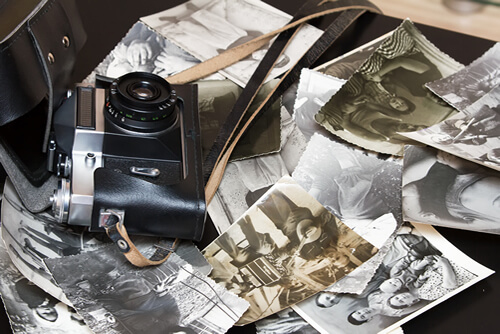There is probably as much confusion about old technology as there is about the new. I’ll try to cover off the basic and most important differences between the old and the new “Digital” audio and video technologies.
Characteristics of Old Audio and Video Technology
The “old” technology is based on magnetic and plastic tapes that require physical contact with some type of reader. And since there is plastic and a physical element involved in recording, storing and replaying content, there is wear and tear and degradation of all the materials over time. Can’t be escaped, no matter how hard you try to preserve them and care you take watching or listening to them. This applies equally to any type of audio or video. In all cases, you’ll see some form of tape. Be it film or VHS, cassette, no matter what, it’s some kind of plastic on a reel. To view or listen to it, you need a machine, and the tape comes into contact with the reader, the feeder, etc. Moving parts mean wear and tear. The environment also impacts the quality of the audio or video. Moisture, light, temperature, and so on. It’s a losing battle no matter what you do.
New Digital Video and Audio Technology – DVD, mp3, mp4, Bluray, .JPG, .TIFF… and So On
What unites all new technology is computerization. All audio and video is recorded and stored in a way that converts the sounds and images into computer code that tells the machine (like a DVD player or mp4, etc…) player to make certain sounds and show images . These sounds and images are all made up of bits of code, so what you see and hear is really the computer code telling the “thing” you’re using to watch your movies or listen to your music, what sounds to make and images to show.
The next important difference is that there is no need for the reader or the viewer to rely on physical contact between the music or film medium to reproduce the audio ro video. It’s not like a tape head that needs to touch the tape, or a film reel that has to be wound from reel to reel, and so on. This also means that the quality of the audio and video will never degrade. It’s computer code, so no matter how many times you play it, it’ll be just as good as the last time.
The type of computer code used, and the type of player or viewer used will determine the quality of the output and whether or not you can edit it. Now, realistically, even the “lower” quality of digital output is, for most human eyes and ears – spectacular. The convenience of smaller files and convenient ways of enjoying your audio recording and videos far outweighs the increase in the almost imperceptible increase in quality. Unless you’re a total AV buff, you’ll probably never see, hear or appreciate the difference.
The only other consideration is whether you want to edit any of these old audio or video recordings. If you do – like string them together, create a series, etc., then you’ll need a format that let’s you do that using a computer and software that work together. It can get a little complicated, unless you’re into that stuff. Most folks want some basic edits and we do that all the time.

